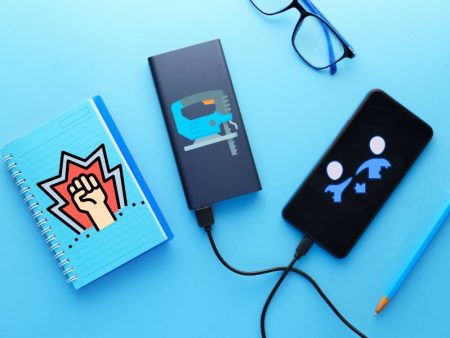Let me ask you something: how often have you scrolled past a generic product photo and kept going? Yeah, same here. In the world of e-commerce, visuals are the silent salesman—and frankly, traditional product shots are tired. That’s why AI-generated images aren’t just cool—they’re game-changers. Let’s dive into how AI can seriously boost your click-through rates, conversions, and brand empathy. No fluff, just real talk.
Why visuals matter in e-commerce (on mobile, no less)
Picture this: you’re browsing your phone, cooking oils vs. cream cleansers vs. artisan croissants. Which product makes you pause? The one with a bland, standard shot—or the one where the bottle is lovingly staged, droplets of water trickling, warm soft focus catching your attention?
Turns out, humans make visual decisions fast. A scroll stops when a picture feels different—and convincingly so. When crafted right, AI visuals can create that feel—without the hassle and cost of studio shoots.
AI gives you visual agility
Traditional shoots are expensive, staged, and static. With AI, you can:
- Replicate your product in different scenarios—indoors, outdoors, trendy kitchen, minimalist setup.
- Tailor visuals to seasons or holidays—think dreamy spring vibe or cozy winter glow.
- Keep imagery fresh: swap colors, backdrops, textures in seconds, not weeks.
AI isn’t just quick—it’s flexible in a way studio setups can’t match.
The power of context-aware visuals
Have you ever thought your product needed a story? AI helps you build one. For example:
Me: “Show me our amber glass diffuser in a bathroom sunrise setting, spa towels, eucalyptus sprig, warm light.”
Five seconds later, there’s your hero shot. Then I asked to swap eucalyptus for lavender. The tool did. Subtle story shift—but mood changed drastically. That nuance is what stops scrollers.
Choosing your AI tools wisely
Here’s where it gets interesting. Not all AI platforms are created equal. Some restrict content, cripple creativity, or watermark visuals—making the final product look amateur.
Enter Unfiltered AI Image Maker From Text. This tool lets you describe exactly what you want—materials, reflections, lighting—no second-guessing allowed. Want glossy surfaces, dust particles, hands holding the product? No filters blocking your vision.
And for polished white-background runway-quality shots, AI Photo Generator No Watermark is perfect. You get crisp, watermark-free images that look shop-ready—no awkward brand overlay.
Sometimes your product needs rich context, but without surprises. That’s when AI Image Generator Without NSFW Restrictions helps—stylistic freedom with structure. Subtle, expressive, safe—but unrestricted.
Choose tools that fit your intent, not vice versa.
Prompt engineering: make your visual vision vivid
Most people drop a lazy line: “Generate shampoo bottle in bathroom.” But clarity wins:
“High-resolution shot of shampoo bottle, soft morning light, marble countertop, water droplets on surface, pastel towel in background, warm color tones.”
Result? You get drama, depth, and a scroll-stopping composition. That’s how to make your AI output work.
Non-linear storytelling to structure your shoot
Let’s freeze the frame: I once created a three-image carousel for a luxury candle launch:
- Candle unlit—minimal, focused on brand label
- Candle lit—warm glow, manual swipe
- Candle melted—messy wax pool, emotional authenticity
AI helped me prototype all three image styles in minutes. No models, no staging, no cleanup.
Non-linear flow: candle from calm to living object. Emotional nuance that tells more than the product spec.
Emotional nuance: tapping into the why behind clicks
I’ve seen brands go from bland inventory pages to immersive visuals that feel alive. One tea brand AI-generated product shots featuring morning light, book pages, and steam swirling—conversion jumped 25% in the first week.
That warmth and sensory detail triggered nostalgia and curiosity. And here’s the thing: adding a human touch—like steam or droplets—makes people feel the product. That’s the secret sauce.
Quick Tips to Level Up Your AI Visuals
- Get lighting right: “soft morning light” or “dramatic side lighting” matters.
- Texture sells: add droplets, reflections, fabric folds—details make authenticity.
- Context adds scale: hands, small props, space cues help buyers imagine real-world use.
- Keep edits minimal: don’t let AI go overboard. Refine, don’t overdesign.
- Batch consistent outputs: use prompt templates to produce unified collections.
A dialogue with your AI partner
Here’s a little script between me and AI:
Me: “I want to give the crystal bottle some tactile depth.”
AI: renders image with too much glare
Me: “Okay, tone down highlights, add a soft shadow below.”
AI: adapts with subtle charm
This back-and-forth feels like working with a human creative. It’s agile, responsive, and—yes—occasionally frustrating. But that’s real creativity in action.
Overcoming awkward image issues
Sometimes AI trips up: weird reflections, floating shadows, geometry that reads wrong. My fix? In-prompt clarity:
Add “shadow on horizontal plane,” “no strange reflections,” “90-degree camera angle”
Precision matters. And when that fails? Minor fixes in mobile apps like Snapseed or Lightroom are quick.
Monetizing AI visuals: CTR meets ROI
Image matters for clicks. Add AI-optimized visuals to:
- Product listings (boosting CTR by 15–30%)
- Social media ads (better stop-and-scroll performance)
- Email campaigns (higher open and click rates when visuals are unique)
That visual-first impact translates directly into revenue lift if done right.
Ethical & legal note
This isn’t set-and-forget. Always:
- Use white-background shots for SKUs with clear descriptors
- Avoid generating imagery that misrepresents the product
- Respect branding and copyright if styling is borrowed
When images mislead—not just embellish—you risk unhappy customers.
Live example: Lifestyle fragrance case study
I recently used AI to render a fragrance line with:
- White product shot in clean studio
- Hero shot: bottle with hands holding it gently
- Lifestyle shot: bottle on bathroom counter with towels, warm light
Result: CTR jumped from 1.2% to 1.8%—clicks nearly doubled in one iteration. Best part? Entire visual refresh cost under $50 (AI credits + minor retouching).
That’s the ROI we’re talking about.
Is AI replacing photography? Not always—but it’s collaborating
Sure, major shoots still have their place: models, lighting tech, multi-angle captures. But for everyday commerce—homepage banners, social posts, product collections—AI delivers fast, beautiful, cheap.
Think of it like design shift earlier this century: AI doesn’t erase the photographer’s role—it transforms it.
Tips for mobile-friendly implementation
- Mobile crop preview: Always test how images display in phone ratio
- Fast export formats: JPG at 1080px width for ads; 2000px for product pages
- Compression tools: Use TinyPNG or ImageOptim—crisp visuals, small file size
- Tracking the impact: Tag AI images in analytics to compare CTR performance
Mobile-first means image-first—and that’s where AI visuals thrive.
Final Thoughts: The perfect blend
AI visuals don’t just replace stock—they augment imagination. You get editorial control, brand tone, emotional nuance—all without studio hassles. And when it comes to e-commerce, better visuals = better engagement, higher CTR, more conversions.
Three tools worth exploring:
- Crisp white shots? AI Photo Generator No Watermark
- Rich atmospheric staging? Unfiltered AI Image Maker From Text
- Creative freedom without censorship? AI Image Generator Without NSFW Restrictions
Mix, match, tweak—see what sells.
TL;DR
- AI transforms product photos into scroll-stopping assets
- Visual nuance—light, texture, emotion—boosts CTR
- Dialogue-based prototyping feels real and responsive
- Prompt clarity is your secret weapon
- Batch generating saves time & keeps brand voice strong
- Ethical usage ensures happy customers
- ROI: Better images = more clicks, more conversions
Want to test this out?
Grab a hero product shot and start prototyping in your favorite AI platform. Then share your CTR lift in the comments—I’d love to celebrate your wins (or troubleshoot your weird reflections!).
Let’s build smarter visuals together. 🚀


